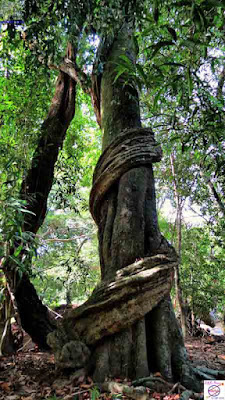Visit Sri lanka It is Beautiful Country !!!!
Join This Page... Sri lankan Beautiful Pictures !
FB Page - www.facebook.com/lankapicturespage
Website - http://lankapicturespage.blogspot.com
http://lankavideospage.blogspot.com
My mail is - basuratravels@gmail.com
T:p :- +94 0776 714 227
Join This Page... Sri lankan Beautiful Pictures !
FB Page - www.facebook.com/lankapicturespage
Website - http://lankapicturespage.blogspot.com
http://lankavideospage.blogspot.com
My mail is - basuratravels@gmail.com
T:p :- +94 0776 714 227
Nilagala Forest lies bordering Gal Oya National Park and covers a catchment area of Senanayake Samudraya. Gal Oya which is one of the main water sources of Senanayake Samudraya falls to reservoir from the Nilgala.
‘Nilgala’ literally means ‘blue rock’. According to Gunatilleke & Gunatilleke (1990) the major vegetation type is lowland tropical dry mixed evergreen forest. The general climatic conditions in the Nilgala area can be described as moderately cool, turning humid during the northeast monsoon season.
Nilgala forest is also important as a major watershed for Gal Oya and Panmedilla Oya throughout the year. There are several peaks within the Nilgala forest area with “Yakun Hela” being the highest (700 m).
Nilgala forest is also rich of archaeological monuments, such as prehistoric and historical Buddhist monasteries.
The Nilgala forest comes under both Department of Wildlife Conservation and the Department of Forest Conservation. About 9000 hectares in the Eastern region comes under the Wildlife Department. This area is accessible to general public. About 13,000 hectares of the forest belong to the Forest Department and no road network or facilities exists to enter this area. The total area of the Nilagala Forest including the surrounding savanna grasslands is around 26,000 hectares.
The access to the Nilagala Forest is between Bibile – Inginiyagala Road. The turn off is at Bulupitiya which is 42 kms from Inginiyagala and 21 km from Bibile town.
The forest office maintains 4 camping sites. Seenukgala Camping Site which is close to the forest office, Mahadorowwa camp site and Paraviyan Ara camp site and the Makara camping site.
There is also bungalow which comes under Gal Oya National Park located at Lokgaloya. This bunglow has a capacity for 10.
Nilgala has 3 jeep tracks. One from Nilgala to Makara, another to Pothuliyadda through Mullegama, Thumbarenuwa and Kebellabokka and the third to Mahawela through Dimbuldena and Kotabowa.
The place which the Gal Oya river disappear the Senanayake Samudraya is called Makara. That name has its origin in the fact that there is a natural tunnel located at this place. Legend has it that the original name was “Makara Kata” or Dragon’s Mouth, coined because the water goes through the tunnel. The Makara Kata had become simply Makara with time.
There is no Makara Kata to be seen now, since the sand where the Kakara Kata was located has all been washed away around five years ago. Now all you can see are huge rocks, between 20 and 50 feet tall and the place where the Makara Kata used to be. Makara is also accessible by boat starting from the Senanayake Samudraya dam.
the major vegetation type of the Nigala Forest is lowland tropical dry mixed evergreen forest. Commonly found trees include Aralu (Terminalia chebula), Bulu (Terminalia bellirica) and Nelli (Phyllanthus emblica). Other
trees such as Kumbuk (Terminalia arjuna), Kon (Schleichera oleosa) and Kaluwara (Diospyros ebenum) are also present. Savana grassland areas consist of Kudumberiya, Kukurumana, Pangirimana, Mana, Iluk and similar.
The forest consists of its share of larger animals from elephants to dear to Buffaloes, the park is more popular with bird watchers.
This forest consist of 4 main peaks Nilgala, Danigala, Yakunnahela, Kahata Aththa Hela and Makadakanda. The Nilgala peak stands out of the rest with its odd shape.
No study has been done on the archaeological value of the Nilgala Forest so far. Some of the know remains consist of a part of a ancient structure which stumps of about 25 stone pillars and the Mukkaru Sohona which can be seen on the Makara Route.
The ruins of a ancient cave temple at Kahata Aththa Hela known as Kahata Aththa Hela Purana Gal Ge is another archaeological site in the forest. Around this lena you will see more ruins scatted around.
At Andayampola remains of a possible ancient fortress can be also seen. Unfortunately no formal archaeological study has been carried out on these sites other than by treasure hunters.
Size - approx. 26,000 hectares
Main attraction - Flora and Fauna
Would you like to go Nilgala Forest Area? Please E-mail your comment in the my mail box below, ( basuratravels@gmail.com ) I can help you it. Thank you! If you like this blog post, or find it useful, please share it on social media!
.................................................................................................................................
Hi ! Everybody !!!!
Tell Your Friends Join this Web Site. Share this Pictures Ur friends.
Im Tour Organizer in Sri lanka.
So you like travel to Lanka? I can help you.
We given to you Booking Hotel Rooms & Tour Transport.
Please Visit my Facebook & website get more details.
FB Page - www.facebook.com/lankapicturespage
G+ - https://plus.google.com/communities/105465329416869974829
Website - http://lankapicturespage.blogspot.com
http://lankavideospage.blogspot.com
My mail is - basuratravels@gmail.com
T:p :- +94 0776 714 227
Thanks!
Hi ! Everybody !!!!
Tell Your Friends Join this Web Site. Share this Pictures Ur friends.
Im Tour Organizer in Sri lanka.
So you like travel to Lanka? I can help you.
We given to you Booking Hotel Rooms & Tour Transport.
Please Visit my Facebook & website get more details.
FB Page - www.facebook.com/lankapicturespage
G+ - https://plus.google.com/communities/105465329416869974829
Website - http://lankapicturespage.blogspot.com
http://lankavideospage.blogspot.com
My mail is - basuratravels@gmail.com
T:p :- +94 0776 714 227
Thanks!






























Own ones trainees get everything that many people appear to be these days and even precisely what they will often appear like during a century! https://imgur.com/a/8xdQdcE https://imgur.com/a/QQzknzp https://imgur.com/a/whd5jHh https://imgur.com/a/r61aI49 https://imgur.com/a/ISrhrg0 https://imgur.com/a/cvEHzgs https://imgur.com/a/qSK4GhG
ReplyDelete